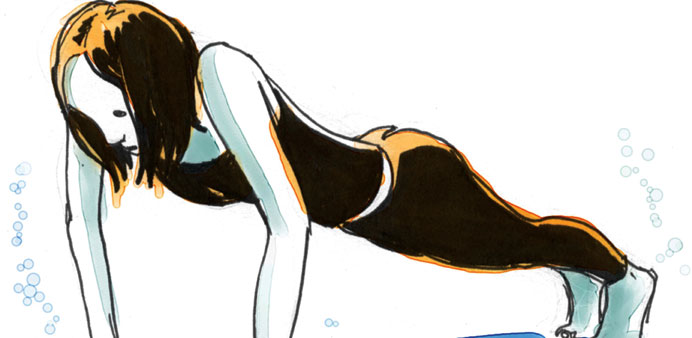Dr Luisa Dillner/London
Too busy to get fit? No longer an excuse. The world of workouts is moving to ever-shorter bursts of activity.
The New York Times recently released a seven-minute workout app based on research showing the benefit of high-intensity interval training (HIIT), while the Human Performance Laboratory at the University of Wisconsin-La Crosse found that 20 minutes of an intense workout burned an average of 15 calories per minute – twice the amount used on a long run.
Typically, HIIT involves 60 seconds of exercise near your peak ability, followed by a recovery period of the same amount, repeated for 20 minutes, three times a week. Your peak ability is around 80 to 90% of your maximum heart rate. Roughly, that involves subtracting your age from 220, but it’s more reliable to use your “rate of perceived exertion”.
If six is sitting on a chair calmly and 20 is “I can’t do any more”, you should pitch yourself at no more than 18.
You can do HIIT on a bike, running, swimming, on gym equipment like a cross trainer, or by sprinting up and down the stairs. So has HIIT really replaced a gentle jog around the block?
It may seem counterintuitive, indeed even dangerous, to start exercising as hard as you can, but research trials have included couch potatoes and overweight and obese people.
HIIT has been shown to improve blood glucose levels in the latter group, and a review of people with heart disease who tried HIIT found improvements in their heart function, and also that they even enjoyed it. Most recently, people with joint pains from arthritis have been found to benefit from high-intensity spinning.
The studies on people with heart or other medical conditions have been carried out under close medical supervision, and if you or your family have a history of heart or other diseases you should ask your doctor to see if HIIT is right for you.
Maureen MacDonald, an associate professor of kinesiology at McMaster University, says you mustn’t go from high impact to a hard stop – keep your legs moving slowly in between the bursts.
She says this avoids blood pooling in the big muscles in your bottom and legs and stops you feeling dizzy.
She recommends 10 sets of one-minute high-intensity and one minute resting for two periods of 20 minutes a week, and says people seem to enjoy this regime more than any other.
The American College of Sports Medicine claims HIIT continues to burn more calories after the workout than traditional exercise.
Exercise that is shorter, enjoyable and burns more calories? Of course you should try it – but be sensible. - Guardian News and Media
♦ Dr Luisa Dillner, a writer and doctor, heads BMJ Group Research and Development


